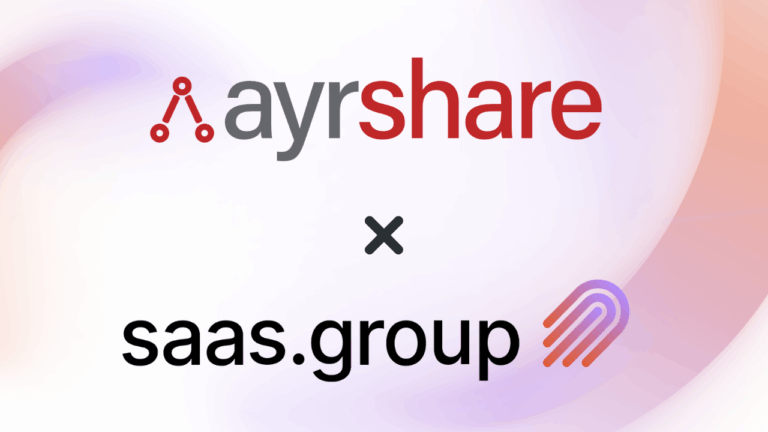“When looking for an acquirer, finding the right “acquirer/founder fit” is crucial for a successful acquisition. We focus on shared vision and values, cultural compatibility, respect for the team and customers, and favorable financial terms and offers. However, going beyond monetary considerations, which involve aligning values, cultures, and long-term goals, also leads to a more successful and harmonious post-acquisition relationship.”
Thomas Gareis, Founder of Seobility
“Specifically for MyWorks, and myself personally, it was important to find an acquirer that “clicked” in key areas: our team culture, the way we run our brand, and the vision we’ve had for our product. Going into the process, it can seem almost impossible to check all these boxes, in addition to other areas of “fit” I had determined. For the acquisition to be successful, it was crucial that these areas were as close of a fit as possible, (and with saas.group, they were indeed) – as they resulted in an incredibly smooth team transition; complete agreement on product direction, and an overall seamless “upgrade” in how internal operations were handled: keeping what worked, and improving what was needed.”
Peter Leonard, Founder of MyWorks Sync
Some say you should approach the search for a perfect acquirer the same way you approach the search for a product-market fit. But that journey is never easy; there are iterations and even pivots required sometimes.
So how do you get the acquirer-founder fit and make sure it’s not as challenging?
Here’s a five-point strategy to help you find it when selling a bootstrapped SaaS business:
Define your Ideal Buyer Profile:
We always talk about a dream exit. And a dream exit is not only about getting the highest price for your business. It’s also about making sure the acquirer has successful experience acquiring similar companies and knows how to take them further. It ensures the financial capability of the buyer so that the sale is not dragged out for months or is dropped altogether at the worst possible moment. It’s about a cultural fit that would ease the integration of your talented team into a new setting. The general vision is also crucial. So taking time to write down all the aspects of your ideal buyer profile would save you hours of unnecessary calls.
Direct Industry Research:
Social media and other online resources are your best friends at this stage. Utilize it to find industry forums, blogs, announcements, posts, etc. to stay informed about potential buyers and the latest deals that went on.
Look for companies that were acquired earlier in your industry or niche to find potential buyers. Do not hold your expectations high on the price point for your business based on their deals, though. Even if the company looks way too similar to yours in terms of the product and the team size, there are many more metrics that acquirers are looking at before determining the offer.
Network and Seek Referrals:
If you’ve been growing your business for a while, chances are you’ve got a great network of founders, industry connections, and mentors. Leverage this network and reach out for introductions and referrals. Networking events, industry conferences, and online communities can also provide opportunities to connect with potential buyers.
If you’re already talking to some companies, ask to be introduced to the founders of businesses your potential buyers have acquired before. It should be a no-brainer for them to share the contact information. It could definitely be a red flag if they’re hesitant.
Conduct Targeted Outreach:
After the initial research, take a proactive approach by directly reaching out to potential acquirers who align with your ideal buyer profile. Research companies that operate in your industry or complementary sectors. Tailor your outreach to highlight the strategic value and growth potential of your SaaS business—approach potential acquirers through personalized emails or LinkedIn connections.
Utilize Online Marketplaces and Platforms:
If you’re not sure how to approach a potential buyer directly, there are a few platforms that could make life easier for you. Acquire.com, Flippa, Bits for Digits, and a few more give founders a great opportunity to explore a larger pool of acquirers. They attract a wide range of buyers, including strategic investors and individuals seeking acquisition opportunities.
That said, don’t just list your business and sit back, waiting for your email to explode. You’re selling a business. And as a good salesperson, you should make sure you’re visible, know your expectations, and the value your business has. So, when you’re approached, you can articulate your position and start building relationships for future collaboration.
Obviously, you can seek the help of professional brokers; there’s nothing wrong with that. But most buyers who are serious about acquiring a business would still prefer a personal connection. It’s essential to get your unique story and the reason for selling the business through. It will give the acquiring company an understanding of the conditions and terms they can offer you.
“If we tell the founder, Hey, you know, you have to have a three-year earnout, and the founder wants to leave within the next three months because he’s burned out. Those two things don’t match.
And we want to do both. We want to have the founder who wants to leave within three months. And be able to make him or her a good offer, and the founders who want to stay with us and maybe just focus on a different role, or even their same role just with a bit more financial security for many years to come.”
Tim Schumacher, Co-Founder of saas.group
Finding the right acquirer-founder fit may sound like a ton of work and a bit of a dream come true. But if you put enough effort into it and do thorough research, taking your personal story and expectations into account, it will stop being something out of a fairy tale. It will make the sale process faster, more straightforward, and definitely more enjoyable.
Table of Contents
Weekly newsletter
No spam. Just the latest news and articles from the world of SaaS and Acquisitions.




